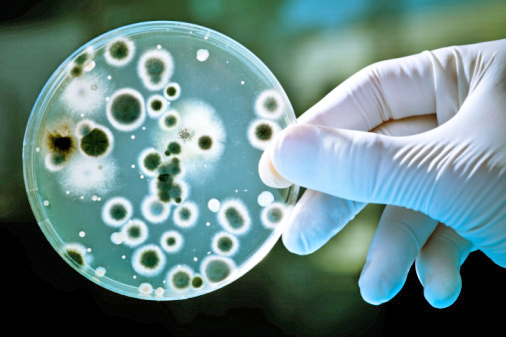Stay Informed
Popular Articles
- Hiatal Hernia: Hidden Cause of Chronic Illness
- Small Intestinal Bacterial Overgrowth (SIBO)
- Applied Lymphology: Unlocking the Secret to Pain Relief
- An Introduction to Constitutional Iridology
- The Low Down on Liver Detoxification
- An Energetic and Emotional Approach to Cancer
- Fat Facts
- Marrow in the Bones
- Blood Type and Nutrition
- Cardiac Herbs: Beyond Hawthorn
Quick Search
The School of Modern Herbal Medicine




Further Validation
- 2/26/2008
- Categorized in: Specific Health Problems
 I am not alone in this line of thinking. Thomas Sydenham, known as the English Hippocrates stated "Disease is nothing else but an attempt on the part of the body to rid itself of morbific matter."
I am not alone in this line of thinking. Thomas Sydenham, known as the English Hippocrates stated "Disease is nothing else but an attempt on the part of the body to rid itself of morbific matter."
A modern medical doctor, Dr. Henry Bieler, came to these same conclusions after years of treating patients with changes in diet. In his book, Food is Your Best Medicine, he states:
The body's "terrific attempt" to burn up these waste products results in fever. And it is the changes (usually destructive) in the organs being used as avenues of emergency vicarious elimination which constitute the pathology, or conditions and processes of a disease.
Following this line of thinking, the name of a disease is based upon a description...of the changes in the organs being used as emergency avenues of elimination.
The Ayurveda tradition of medicine from India also describes disease as originating with an imbalance which impairs the body's biological fire. They call this fire "agni" and teach that it governs the process of breaking down, absorbing and assimilating food. Once agni is impaired, the body's natural immunities falter and "ama" (toxins) circulate throughout the body and accumulate in weak, susceptible areas, thus creating disease.
Cold Symptoms are the Cold Cure
This furnace analogy helps us to understand the truth about the common cold. Modern science will never discover a cure for the common cold, because the cold IS the cure. That is to say, the symptoms we associate with colds: fever, sinus drainage, coughs, sneezing, etc. are not the disease. They are not the enemy. They are the efforts of the body to heal itself. In fact, as we have suggested, this is true not only of colds, but of all acute ailments. Symptoms like rashes, hives, diarrhea, nausea, vomiting, itching, body odor, inflammation and even pain are all manifestations of the life process. They are all efforts of the body to cure itself. Hence, anything we do to try to block or suppress these symptoms will only prolong the illness.
Going back to our furnace analogy, suppose we have a person whose body is in a disease state. The fire of life is burning low and the system is clogged with ash and smoke. To preserve the fire of life, the body is using what energy it does have to force an elimination of toxins through the respiratory passages. Because the person believes that this eliminative process is the enemy he takes a drug which poisons the respiratory system so that it is no longer strong enough to act as a channel for eliminating these toxins. This might be compared to putting a cork into that chimney. Now, the symptoms have been relieved, but at what price?
 By this analogy, we can see that poisons destroy the vital power of the body, which suppresses the symptoms and therefore interferes with the healing processes of the body. This helps us understand why poisons may give the appearance of a cure, but in the long run, they destroy our health and vitality. Unfortunately, most modern drugs are poisons. In fact, Eli Lily, the founder of one of our largest pharmaceutical houses said that all drugs are poisons. He maintained that by definition drugs are poisons and if a drug was not a poison it was not a good drug. This is why drugs suppress symptoms, but they do not remove the underlying cause of disease. We'll discuss this in greater detail in chapter four.
By this analogy, we can see that poisons destroy the vital power of the body, which suppresses the symptoms and therefore interferes with the healing processes of the body. This helps us understand why poisons may give the appearance of a cure, but in the long run, they destroy our health and vitality. Unfortunately, most modern drugs are poisons. In fact, Eli Lily, the founder of one of our largest pharmaceutical houses said that all drugs are poisons. He maintained that by definition drugs are poisons and if a drug was not a poison it was not a good drug. This is why drugs suppress symptoms, but they do not remove the underlying cause of disease. We'll discuss this in greater detail in chapter four.
The great secret of healing is that the body heals itself. All we can do is assist the body's own healing process and this can only be done by providing the body with those things which would have helped to keep it healthy in the first place. Thus, the true art of healing involves things like: adequate rest, proper nourishment, pure water, fresh air, proper elimination, exercise, touch, positive mental attitudes and all other processes which would tend to keep a healthy person healthy. All of these things are natural to the body. Hence, healing by means of these processes can rightfully be called: natural healing, because all of these therapies are therapies which are natural to the body, whether it is healthy or sick. Thomson put it this way, "The same thing will prevent disease that will cure it."
What About Germs?
 But wait a minute. We taught in school that germs cause disease. Cold symptoms don't arise from blocked elimination, they are caused by infection. We catch colds don't we.
But wait a minute. We taught in school that germs cause disease. Cold symptoms don't arise from blocked elimination, they are caused by infection. We catch colds don't we.
The truth is, germs are not the primary cause of disease. They are a secondary effect and many herbalists and natural healers since Thomson's day have realized this.
Just prior to Pasteur's day Rudolf Virchow, in his pioneer work on cellular pathology, maintained that the health of body cells depended on their chemical make-up and this chemical make-up depended in turn upon the kind of food eaten by the individual. "If I could live my life over again," stated Virchow, "I would devote it to proving that germs seek their natural habitat--diseased tissue--rather than being the cause of diseased tissue: e.g. mosquitoes seek stagnant water, but do not cause the pool to become stagnant."
The famous herbalist, Dr. Edward E. Shook explains this eloquently in his Advanced Treatise in Herbology. Speaking of orthodox medical tests he says:
"They will show you illustrations of minute living organisms (so-called pathological germs) which are found in sputum, or pus taken from diseased tissues or secretions. Probably, at first sight, you are astonished; then you wonder "Can this be true?" Yes, it must be true. There they are! Right in the pus, plain as can be. How awful that such creatures can live and destroy our bodies without our knowledge until too late. Surely these doctors have discovered the truth. They are right. The germs must be killed." But wait a minute before you jump to such a conclusion. We find the fly on garbage which is composed of decaying organic matter. Is he, the fly, the cause of the garbage, or does the garbage breed the fly? We find the white maggot in decaying flesh. Was he (the maggot) the cause of death? And what are these creatures doing there? They are eating, consuming, doing away with decaying matter...."
Shook recognized that germs, like flies and mosquitoes, live where there is stagnation and decay. Using Thomson's furnace analogy, germs live in the smoke and ash that accumulates where the fire is burning low. When the fire is burning hot and clean, germs cannot live.
In modern terms we call that clean, hot burning state immunity. Even in orthodox medical circles, it is recognized that immunity is an important factor in whether or not we "catch" a disease. Here are two statements which discuss this concept. These are from Man the Unknown by the famous medical doctor Alexis Carrol.
Microbes and viruses are to be found everywhere, in the air,in water, in our food. They are always present at the surface of the skin, and of the digestive and respiratory mucosas. Nevertheless, in many people they remain inoffensive. Among human beings, some are subject to diseases, and others are immune. Such a state of resistance is due to the individual constitution of the tissues and the humors, which oppose the penetration of pathogenic agents or destroy them when they have invaded our body. This is natural immunity. This form of immunity may preserve certain individuals from almost any disease. It is one of the most precious qualities for which a man could wish. We are still ignorant of nature. It appears to depend on some properties of ancestral origin, as well as on others acquired in the course of development...
But natural immunity does not exclusively derive from ancestral constitution. It may come from our mode of life and alimentation, as Reid Hunt showed long ago. Some diets were found to increase the susceptibility of mice to experimental typhoid fever. The frequency of pneumonia may also be modified by food. The mice belonging to one of the strains kept in the mousery of the Rockefeller Institute died of pneumonia in the proportion of fifty-two percent while subjected to the standard diet. Several groups of these animals were given different diets. Themortality from pneumonia fell to thirty-two percent, fourteen percent, and even zero, according to the food.
Disease can be prevented by the individual doing everything in his power to keep in the best physical condition. Disease is a common enemy of all of us, waiting to destroy, but Nature is in league with us if we obey her laws. With a normal body and pure blood, should the invader arrive, the fight is on our side. But once the body is weakened by heredity as a result of our parents' or forefathers' neglect of the body, through the abuse of alcohol, tobacco or immoral living, lack of exercise, overeating and loss of sleep, overwork or lack of work, or improper food, then will the soil be fertile for the planting of the germs of disease. When exposed and once planted, the fight will be in their favor, as the rundown body will not have sufficient vitality to overcome the invader and sickness and death result.
These quotes all suggest that our health is not dependent on the whim of germs, but rather that germs take advantage of our body when it is weakened by abuse. Our thesis is that germs invade the body only because of the weakened energy of the tissues and the accompanying accumulation of toxic waste. Hence, using antibiotics and drug medicines may be likened to spraying our garbage piles and swamps with insecticides. It may temporarily relieve the symptoms, but as soon as the poison wears off, the scavengers will return.
Thompson's analogy that the body is like a furnace is still useful and valid. So, what about the fuel we are "burning" in our modern stomachs? Is it high quality fuel, poor quality fuel or kitchen garbage? It's something to think about.
